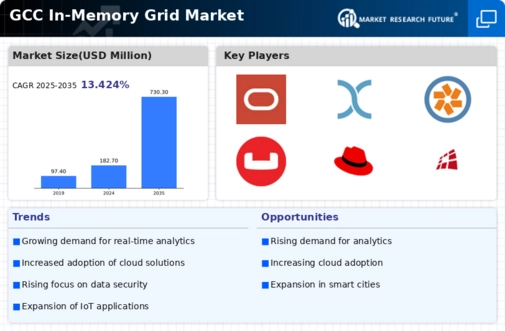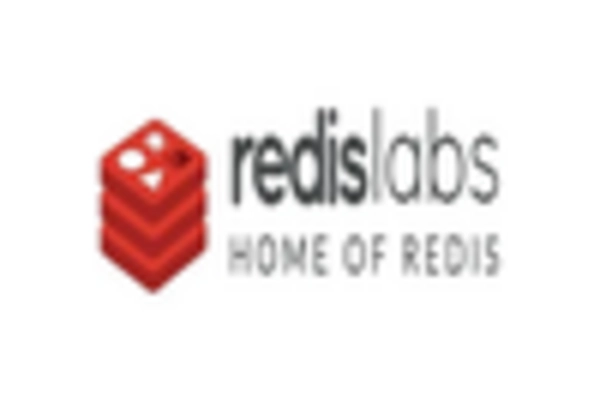Growing Need for Data Processing Speed
The in memory-grid market is experiencing a surge in demand driven by the increasing need for rapid data processing capabilities. Organizations across various sectors in the GCC are recognizing the limitations of traditional data processing methods, which often lead to latency issues. As businesses strive for real-time insights, the in memory-grid market provides a solution that enables faster data retrieval and processing. This is particularly relevant in sectors such as finance and telecommunications, where timely decision-making is crucial. According to recent estimates, the in memory-grid market is projected to grow at a CAGR of approximately 20% over the next five years in the GCC region. This growth is indicative of the market's potential to meet the evolving demands of data-intensive applications.
Demand for Enhanced Customer Experience
In the competitive landscape of the GCC, businesses are increasingly focusing on enhancing customer experience, which is driving growth in the in memory-grid market. Companies are leveraging in memory-grid solutions to analyze customer data in real-time, enabling personalized services and improved engagement. This shift towards customer-centric strategies is particularly pronounced in the e-commerce and banking sectors, where understanding customer behavior is critical. By utilizing in memory-grid technologies, organizations can respond swiftly to customer needs and preferences, thereby fostering loyalty and retention. The in memory-grid market is likely to benefit from this trend, with projections indicating a potential increase in revenue by 10% as businesses prioritize customer experience initiatives.
Increased Adoption of Big Data Technologies
The in memory-grid market is significantly influenced by the rising adoption of big data technologies across the GCC. As organizations generate vast amounts of data, the need for efficient storage and processing solutions becomes paramount. In memory-grid systems offer the capability to handle large datasets with ease, allowing for advanced analytics and data manipulation. This trend is particularly evident in industries such as retail and healthcare, where data-driven decision-making is becoming the norm. The integration of in memory-grid solutions with big data frameworks is expected to enhance operational efficiency and drive innovation. Market analysts suggest that the in memory-grid market could see an increase in market share by up to 15% as more companies embrace big data strategies.
Rise of Internet of Things (IoT) Applications
The proliferation of Internet of Things (IoT) devices in the GCC is creating new opportunities for the in memory-grid market. As IoT applications generate massive volumes of data, the need for efficient data processing and storage solutions becomes increasingly important. In memory-grid technologies enable organizations to process data from IoT devices in real-time, facilitating timely insights and actions. This is particularly relevant in sectors such as smart cities and industrial automation, where immediate data analysis is essential for operational efficiency. The in memory-grid market is expected to expand as more businesses adopt IoT solutions, with estimates suggesting a growth rate of around 18% in the coming years, driven by the demand for seamless data integration and analysis.
Investment in Digital Transformation Initiatives
The ongoing investment in digital transformation initiatives across the GCC is significantly impacting the in memory-grid market. Organizations are increasingly recognizing the importance of modernizing their IT infrastructure to remain competitive. In memory-grid solutions play a crucial role in this transformation by providing the necessary speed and efficiency for data processing. As companies transition to digital platforms, the demand for in memory-grid technologies is likely to rise. This trend is particularly evident in sectors such as finance and healthcare, where digital transformation is essential for improving service delivery. Analysts predict that the in memory-grid market could experience a growth trajectory of approximately 12% as organizations continue to invest in digital solutions.

















Leave a Comment